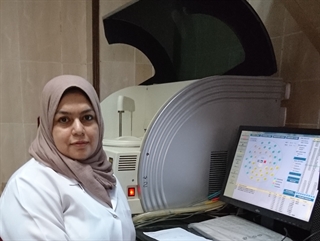1. Why did you choose a career in infection prevention and control?
Because I want to spread the knowledge of infection prevention to everyone working in health care settings.
2. What advice would you give someone who is interested in an infection prevention and control career?
My advice to anyone interested in IC career is to go on; it is very important and challenging career.
3. What does being a CIC® mean to you?
I became part of an international community and made me feel always supported and confident.
4. What was the best studying method for you when preparing for the initial certification examination?
The best way to study is the link what you are studying with the real practice so you don't forget.
5. What advice would you give someone pursuing certification?
My advice to anyone planning to take the certification is to enjoy every single word you are studying. The APIC text is very interesting and full of knowledge and experience.
6. How do you stay up-to-date on infection prevention and control practices?
To stay up to date you should be a member of related groups, especially APIC membership and its local chapters, where you will find lots of resources and events.
7. Are you part of an APIC or IPAC Canada chapter? If so, would you recommend it to others?
Yes I am a member of APIC, and I strongly recommend it to everyone in this career.
8. How has the CIC® helped you grow professionally and in your career?
Being a CIC has made me more confident and evidence based on my career.
9. Are there any CIC® stories that keep you up at night? This can be related to the examination or a specific patient story that stands out.
One of the biggest challenges I was facing early in my career was to follow up patients for SSI surveillance, usually the number of follow up patient isn't enough to get accurate and meaningful SSI rates. I and my team came up with a new idea, we developed a follow up chart for patients who didn't come back for follow up.
We decided to contact these patients by calling them every week to check for any signs or symptoms suggesting SSI and write it down in our follow up chart. This practice made a big difference in our surveillance results.
